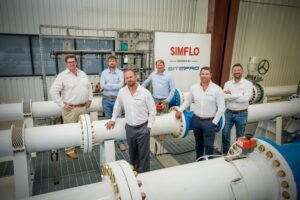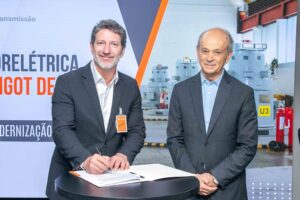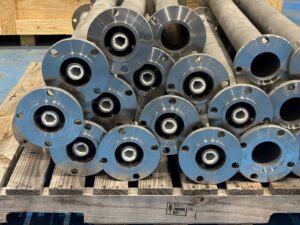Venice airport chooses Lowara technology
A wide-ranging expansion and modernization project has been drawn up and developed for the Venice Marco Polo airport, providing for the creation of various infrastructures for the benefit of travellers and for the construction of new buildings dedicated to the various airport services.
The new terminal, currently under construction, will offer travellers improved services designed to meet their requirements. This is an important objective, since the Venice airport has been classified among the top five in Italy for intensity of air traffic.
In addition to the new terminal there are other expansion projects, including one, which is already at an advanced stage of construction, for the creation of three hangars next to the runways for the sheltering and maintenance of aircraft.
Two twin hangars will each provide shelter for two aircraft, while a larger central hangar is designed to accommodate Boeing aircraft, covering an overall surface area of 3000 square meters.
Offices for the national and international airlines will also be made available next to these facilities.
A tender was issued for the supply of various systems, in particular the firefighting system which is very important and complex, even though the aircraft are normally sheltered with empty tanks to minimize risk.
The project, by appointment of SAVE Engineering srl, was drawn up by an important engineering company from Padua and installed by a large building contractor from Alessandria, in cooperation with DALKIA srl of Milan. The latter, with the support of the Lowara sales office, have designed the firefighting system, for which Lowara booster sets were selected and approved.
The firefighting system uses foam extinguishers. The water and foam mixture is conveyed by pipes running around the perimeter of the hangar from two pre-mixing tanks to small guns installed at the four corners of the building. In case of activation, the guns will spray the foam inside the structure.
The units supplied by Lowara consist of a GUYBX01D-DFHFU80-250C/57329+SV209R11M and a GUDBX01D-SV808R40T+DVU125L270/133629.
The latter is a pressure boosting package consisting of: one motor pump with Vogel 125L70-type liquid end, cast iron pump body and impeller. The set also features flexible motor/pump coupling and structural steel base, Iveco Aifo turbo diesel engine type 8061 S40 with 133.6 kW (180 Hp) at 2900 rpm, two 12 V 155 Ah batteries, six in-line cylinders, 6000 cu. cm displacement, air/water cooling; one Lowara SV808R40T-type multistage vertical pilot pump with parts in contact with liquid to be pumped made of AISI304 steel, rigid motor/pump coupling. Three-phase 380-415V, 50Hz, 2900 rpm motor, 4 kW power. The hydraulic performances (for the Vogel motor pump) are H max=100 m.c.w.; Q max= 10200 l/min. with H=51 m.c.w..
One GXDVU125L270/133629-type motor pump, with the same hydraulic characteristics as described above, has also been supplied for connection to the same system.
Considering the large dimensions of the system, we had to deliver the set in two separate parts which were then assembled on location.
Start-up and final testing for system commissioning were performed in September 2001.
Source: Xylem Inc.







